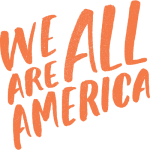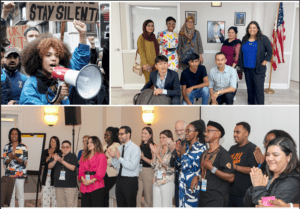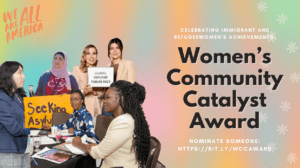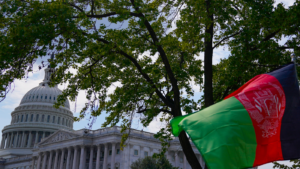by Nicole Melaku, Executive Director, National Partnership for New Americans
Welcoming and including immigrants into our communities and our democracy requires partnership and cooperation, and nowhere is that more true than in the rural United States. In April, I had the incredible opportunity to join Utah Governor Spencer Cox’s Office of Economic Opportunity, and several state and national NGOs on a three-city tour of Utah to listen and learn how local communities were building welcoming and newcomer inclusion strategies in their communities. What I saw there were communities whose resilience is built in part on the systems they’ve built to meet the needs of newcomers.
As a long-time immigrant inclusion practitioner who began my advocacy and community engagement work in the Mountain West, it did not surprise me to see the breadth of community partners coming together to think, strategize and identify ways to better work together to create the conditions necessary so that foreign-born individuals and families who call Utah home can access the necessary resources to achieve their goals and become fully welcomed into their new communities.
As national advocates, NPNA has the privilege of a “birds-eye” view of the diverse political, social, and economic realities that often determine the level of state and local investment in welcoming infrastructure. I was heartened to see that Utah, while not a state with large numbers of newcomer arrivals, is nevertheless thoughtful and intentional in promoting inclusion at the state, municipal, and community levels. As part of this strategy and over a year-long process, the office of Gov. Cox and partners have been convening stakeholders and promoting statewide dialogue to steward the communities leadership to build the infrastructure that will support the successful orientation, economic mobility, and full inclusion of New Americans in Utah.
Of note was a community roundtable in the City of Ogden, a small city 45 minutes north of Salt Lake City with a foreign-born population of just 10.7%, according to the U.S. Census. In attendance were community stakeholders from the education, community safety, and philanthropy sectors, joined by officials from municipal government and from USCIS. I could see colleagues leaning into one another’s expertise, listening closely and being honest about the gaps they experience in meeting the needs of the newcomers in their communities.
The gaps they’ve identified are in basic needs, like supporting the community in accessing the workforce training and job certifications, uncovering language barriers to help people access community resources, and building mechanisms to help immigrant parents engage with their children’s school. One can easily see how difficult it can be for newcomers to navigate these systems unless there are leaders who are on alert for challenges, identify the needs, and strategize how to coordinate, build infrastructure, and resource the community to meet those gaps.
Utah – like the rest of the Mountain West – conjures images of rugged individualism where settlers once established themselves with sheer grit and determination. But what those of us from that part of the country know is that underlying that determination is a supportive community that comes together to help when a family, friend, or visitor is in need. In Ogden, I found a community that was warm, welcoming, and forward-thinking in its approach to building a plan to promote economic mobility, immigrant inclusion, and social cohesion among long-standing and newly arrived-communities. I am optimistic that even in these divided times, leaders of rural communities in Utah and beyond will continue to learn from and build on this deep and meaningful work. America’s brightest future is a welcoming one.



